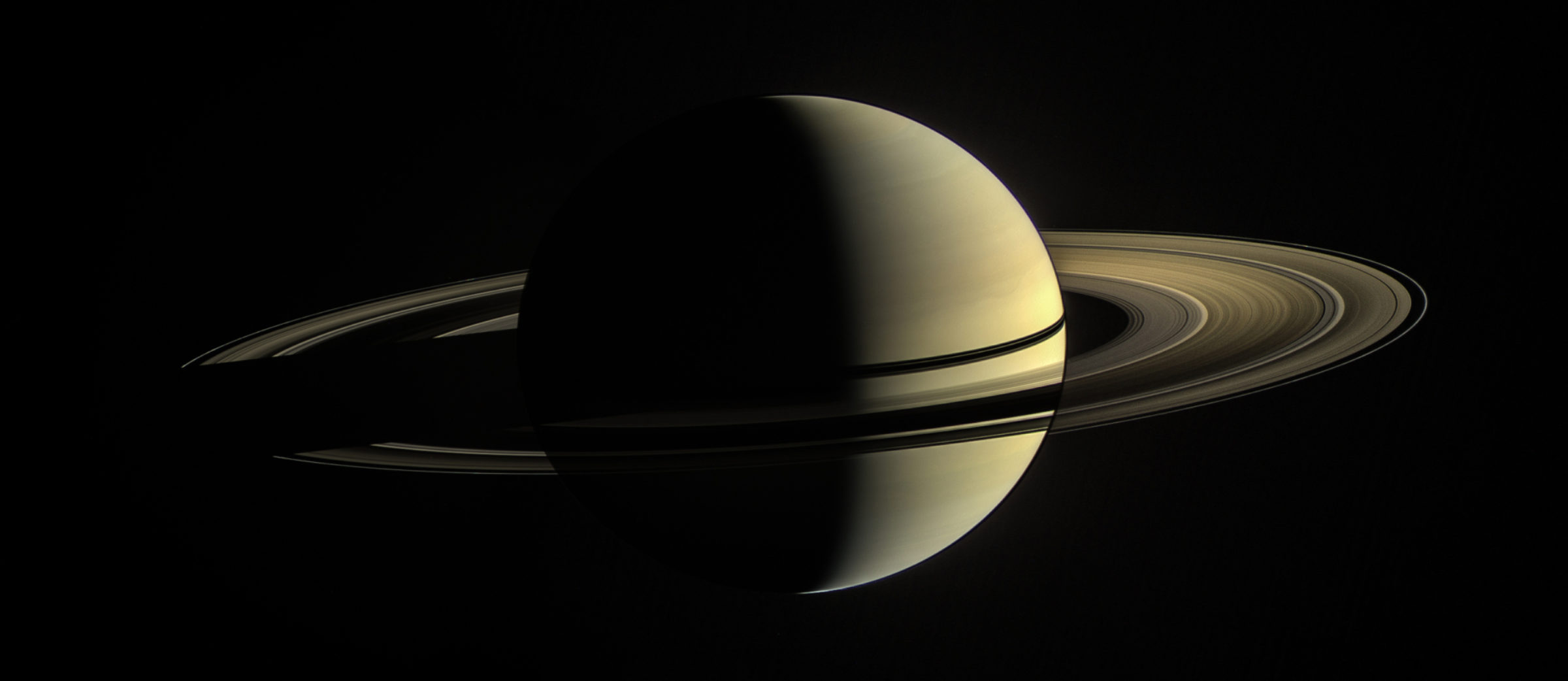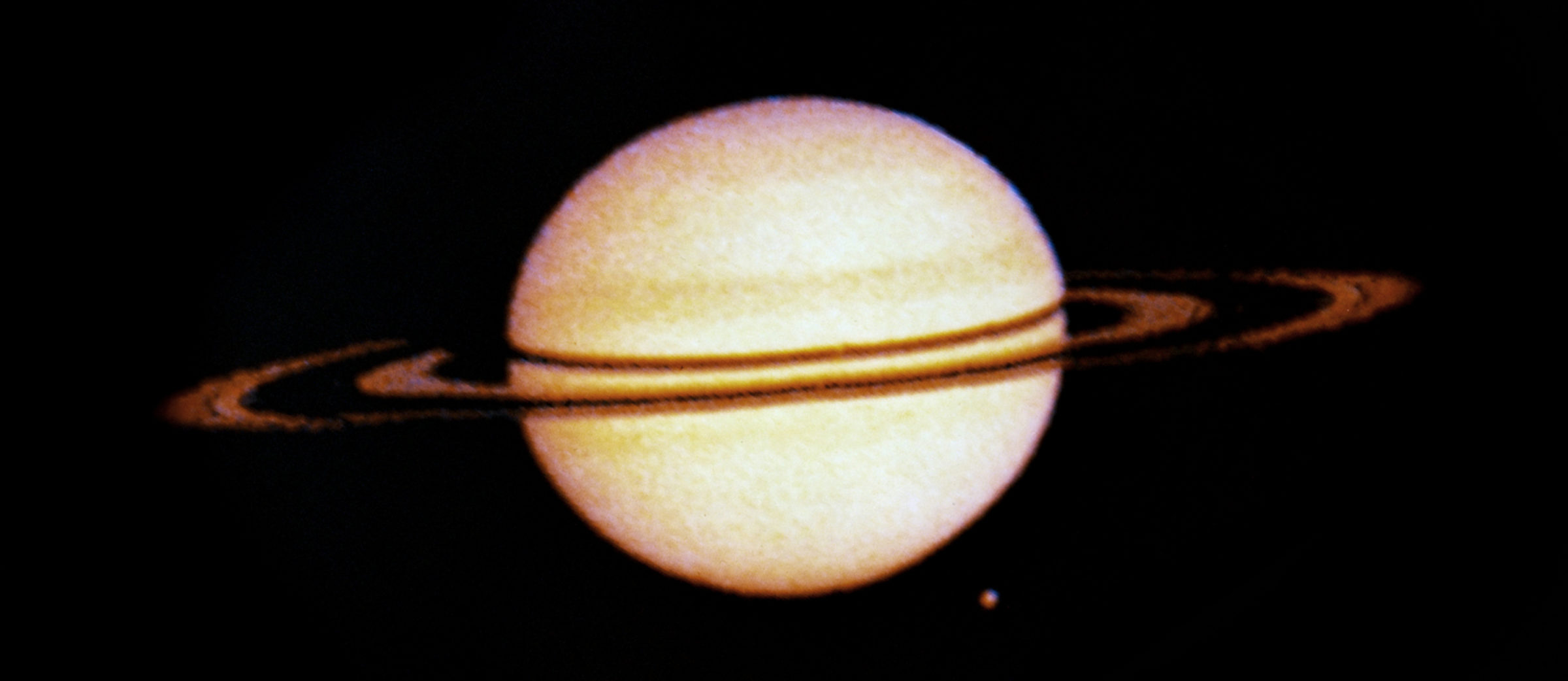Then & Now: Saturn
Left image:
Pioneer 11, the first robotic space probe to encounter Saturn, took two pictures of the ringed planet on August 29, 1979. Those images were then combined and synthesized to produce the image you see here. Pioneer 11 launched on April 6, 1973, with a mission to study the solar wind, cosmic rays, the asteroid belt, and the environment around Jupiter and Saturn. It successfully completed its mission and transmitted its last bit of science data to NASA in 1995. Now, it continues on its trajectory into interstellar space following after its predecessor, Pioneer 10. Led by Carl Sagan, NASA approved a project to affix a message to the exteriors of the Pioneer 10 and 11 spacecraft: the famed Pioneer Plaques. These golden plaques serve as a greeting and invitation for extraterrestrial beings who may eventually come across these spacecraft as they sail through their solar systems.
Right image:
The Cassini spacecraft snapped this beautiful photo of Saturn on January 2, 2010. This natural-color view is a composite of images taken in visible light with the spacecraft's camera. The image was then processed to brighten the rings on the night side of the planet to more clearly reveal their features.
On Sept. 15, 2017, the Cassini spacecraft plunged into Saturn’s atmosphere, breaking up and becoming part of the planet itself. This self-destructive maneuver was used to keep the spacecraft from contaminating Saturn’s moons, some of which seem to harbor ingredients for life. The Cassini mission is a cooperative project of NASA, ESA (the European Space Agency), and the Italian Space Agency — all of which are plowing through the mountain of data that was collected during the spacecraft’s 13 years in orbit around the planet.


 Explore Worlds
Explore Worlds Find Life
Find Life Defend Earth
Defend Earth



